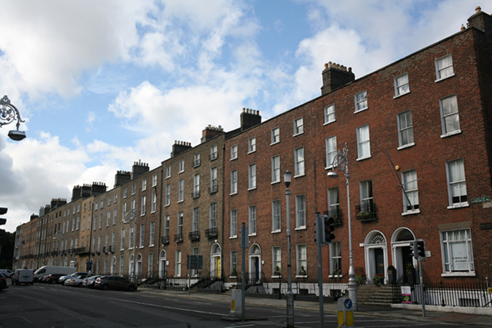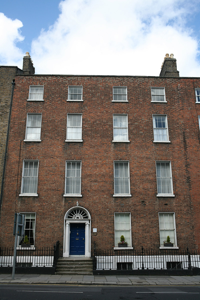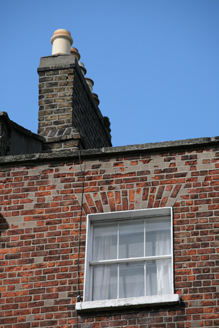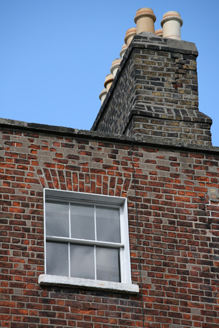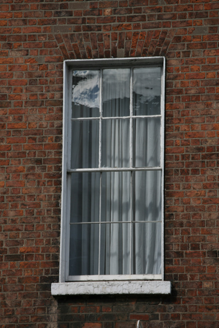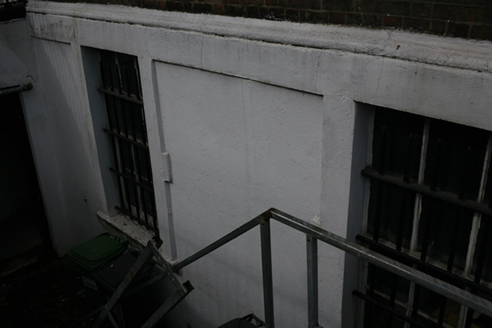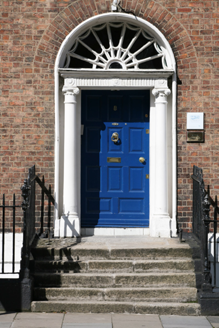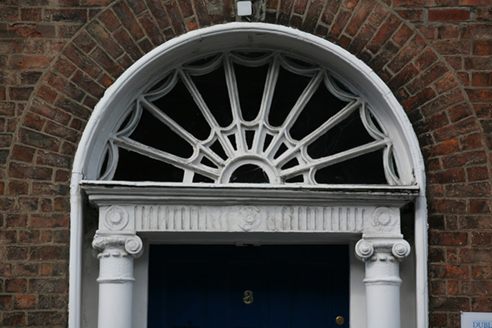Survey Data
Reg No
50930060
Rating
Regional
Categories of Special Interest
Architectural, Artistic, Social
Original Use
House
In Use As
Clubhouse
Date
1790 - 1810
Coordinates
316651, 233220
Date Recorded
09/09/2015
Date Updated
--/--/--
Description
Terraced four-bay four-storey over basement former townhouse, built c. 1800, with shallow rear pile. Now in use as clubhouse. Double-span pitched slate roof set behind parapet wall with granite coping, parapet gutters and shouldered brick chimneystacks with lipped clay pots to either end. Red brick walls laid in Flemish bond with flush lime pointing. Moulded granite plinth course over ruled-and-lined rendered basement wall. Gauged brick square-headed window openings with granite sills, patent reveals and largely original timber sash windows (some lower sashes replaced) and much historic glass; three-over-three pane to third floor and six-over-six to remainder. Painted granite surround to basement window openings with metal grilles affixed. Gauged brick round-headed door opening with masonry Ionic doorcase comprising square-headed door opening flanked by Ionic columns supporting fluted lintel entablature and original painted spoked fanlight. Original timber door with eleven raised-and-fielded panels and brass door furniture opening onto granite platform and granite steps with cast-iron boot scraper. Platform and basement enclosed by original wrought- and cast-iron railings set on granite plinth wall with timber steps providing access to basement. Forming part of a continuous terrace of former townhouses lining the west side of Fitzwilliam Street Upper.
Appraisal
A handsome terraced early-nineteenth century former townhouse retaining its original façade composition and much original external fabric, including sash windows and ironwork. The granite dressings contrast with the mellow brick, adding colour and textural interest, while the doorcase and good fanlight forms the decorative focus. Its wide four-bay form makes it an imposing addition to the streetscape. It forms part of a long terrace of former residences and contributes significantly to the coherent appearance of the streetscape in the heart of the south Georgian core. It is now home of the United Arts Club, founded 1907. Founding members included W.B. Yeats, Countess Markievicz and AE - George Russell.
